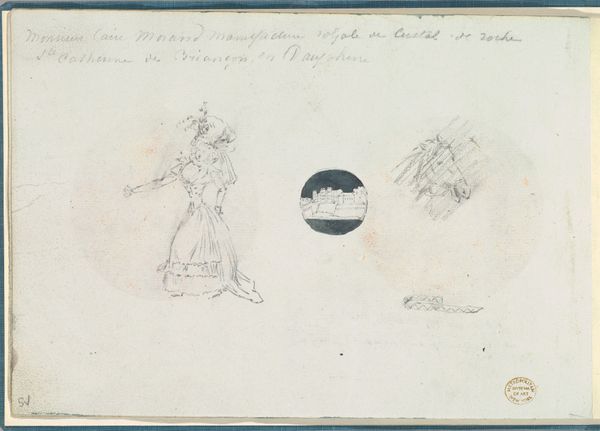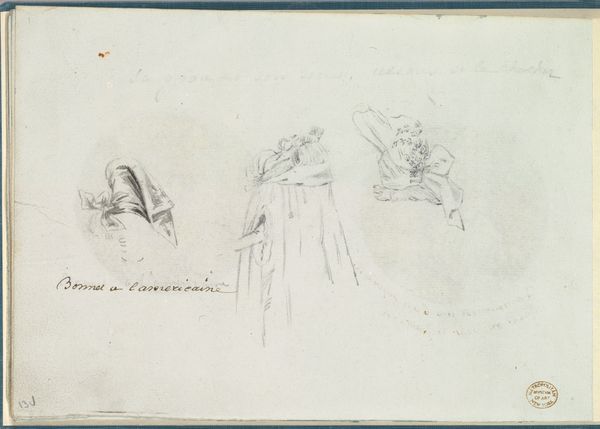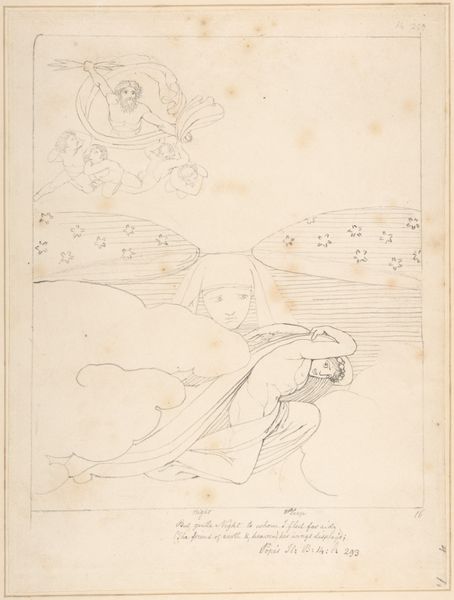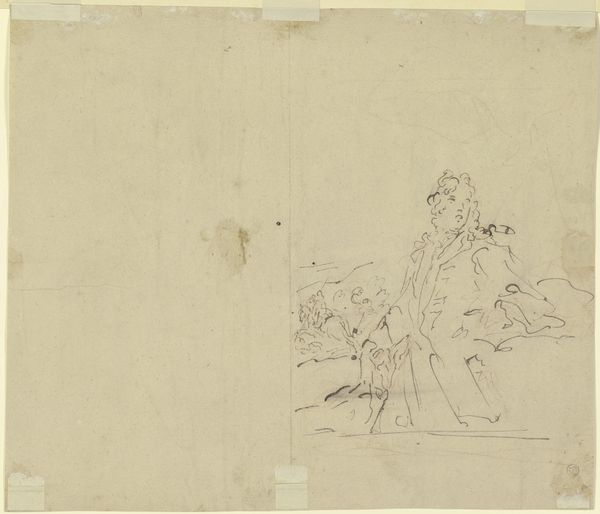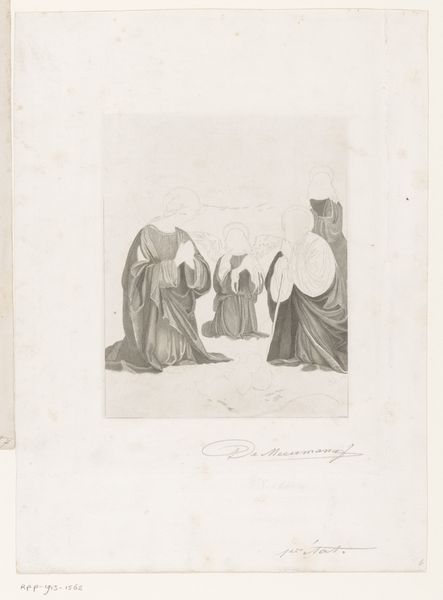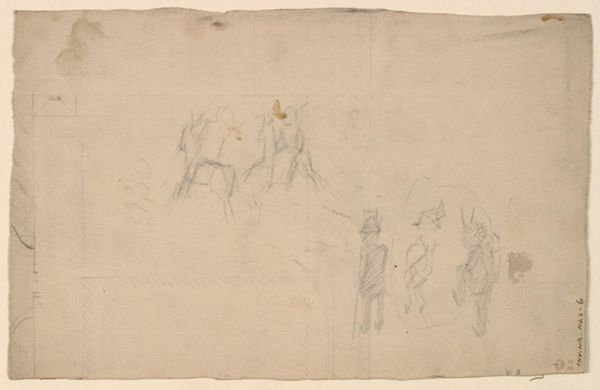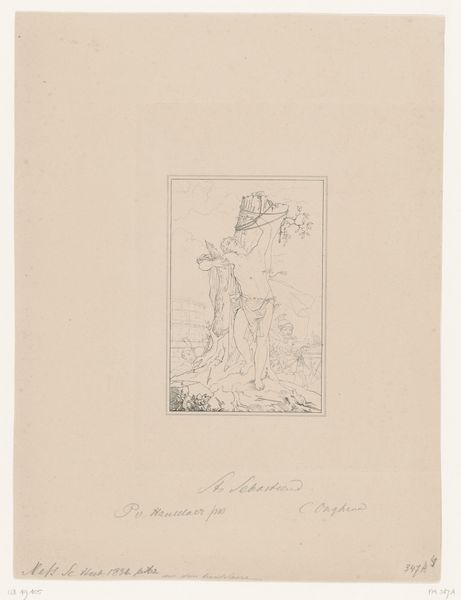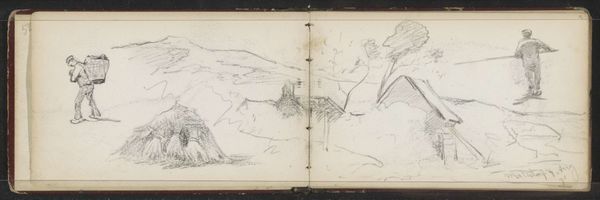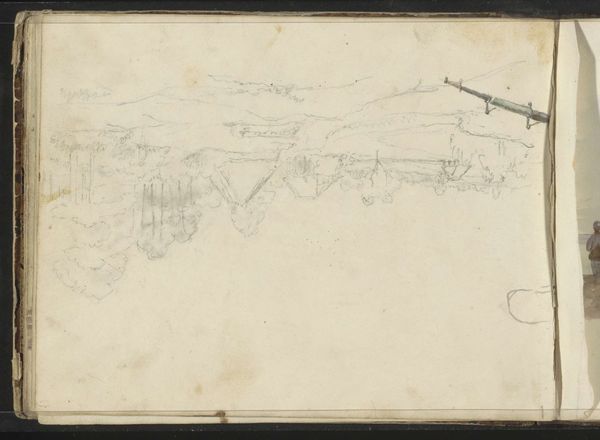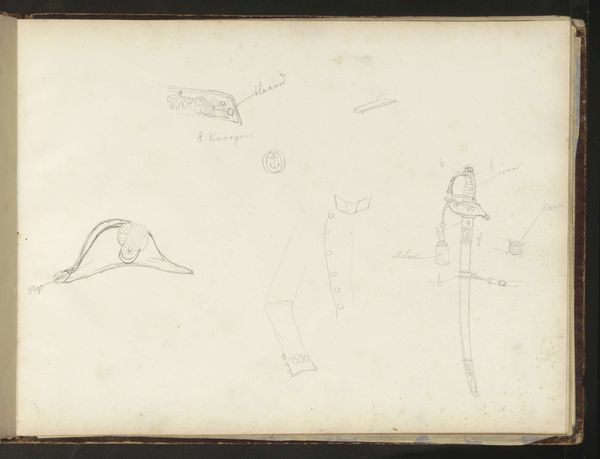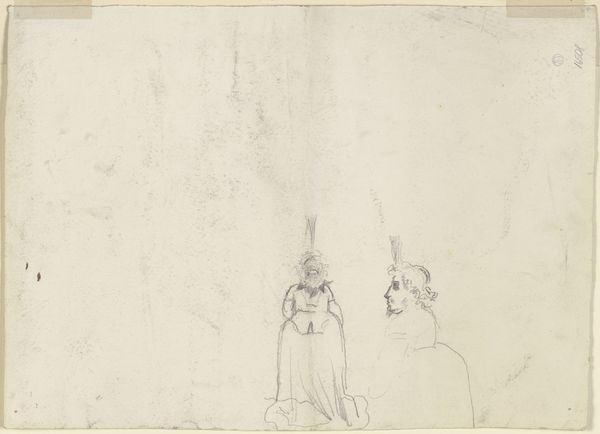
drawing, pen
#
drawing
#
aged paper
#
toned paper
#
allegory
#
old engraving style
#
personal sketchbook
#
ink drawing experimentation
#
old-timey
#
romanticism
#
sketchbook drawing
#
pen
#
history-painting
#
storyboard and sketchbook work
#
cartoon carciture
#
sketchbook art
Dimensions: height 332 mm, width 382 mm
Copyright: Rijks Museum: Open Domain
Teodoro Matteini etched "Pluto Gives Instructions to Napoleon", and it depicts Napoleon receiving guidance from the underworld. The image invokes classical antiquity. Pluto, the god of the underworld, sits enthroned, holding a scepter. The scepter, a symbol of power and authority, is not unique to Pluto. We see it echoed through history in royal portraits, signaling dominion. Napoleon stands before him, draped in classical robes, holding what appears to be a vase or urn. Water pours from the vase, symbolically depicting the river Avernus, the gateway to the underworld. These rivers mark a boundary, a liminal space between worlds. Such imagery reaches back to ancient Greek vase paintings, where similar figures inhabit scenes of transition and transformation. Consider the psychological weight of these symbols. The encounter with the underworld evokes themes of death, rebirth, and hidden knowledge. The emotional tension inherent in this meeting—between ambition and mortality—captures the anxieties of an era defined by upheaval and change. Ultimately, Matteini's etching reminds us that symbols are never fixed. They are fluid, adapting across time and culture, reflecting our deepest fears and desires.
Comments
No comments
Be the first to comment and join the conversation on the ultimate creative platform.
